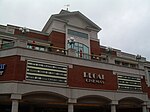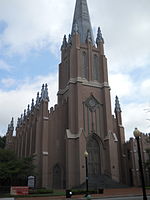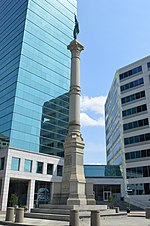Burning of Norfolk

The Burning of Norfolk was an incident that occurred on January 1, 1776, during the American Revolutionary War. British Royal Navy ships in the harbor of Norfolk, Virginia, began shelling the town, and landing parties came ashore to burn specific properties. The town, whose significantly Loyalist population had fled, was occupied by Patriot forces from Virginia and North Carolina. Although the Patriots worked to drive off the British landing parties, they did nothing to impede the progress of the flames, and began burning and looting Loyalist-owned property instead. After three days, most of the town had been destroyed, mostly due to the action of Patriot forces. The destruction was completed by the Patriots in early February to deny use of even the remnants of the town to the British. Norfolk was the last significant foothold of British authority in Virginia; after raiding Virginia's coastal areas for a time, its last royal governor, Lord Dunmore, left for good in August 1776.
Excerpt from the Wikipedia article Burning of Norfolk (License: CC BY-SA 3.0, Authors, Images).Burning of Norfolk
Saint Pauls Boulevard, Norfolk
Geographical coordinates (GPS) Address Nearby Places Show on map
Geographical coordinates (GPS)
| Latitude | Longitude |
|---|---|
| N 36.8475 ° | E -76.285 ° |
Address
Saint Pauls Boulevard 244
23510 Norfolk
Virginia, United States
Open on Google Maps










